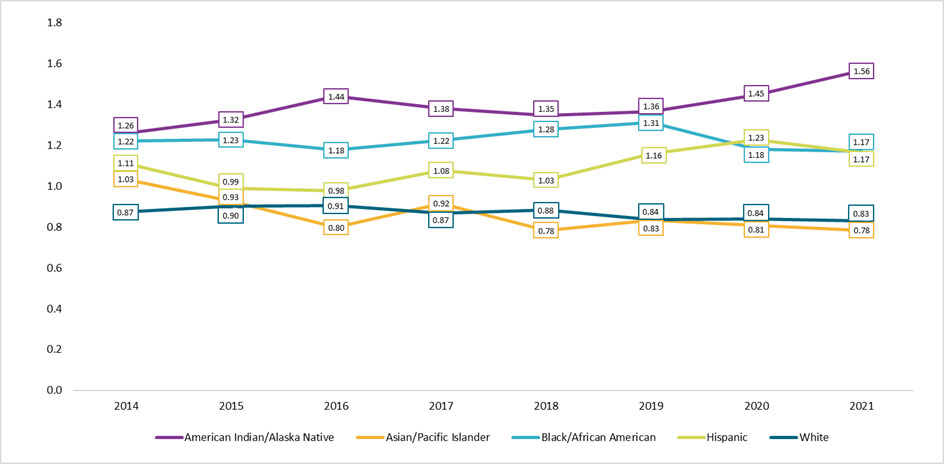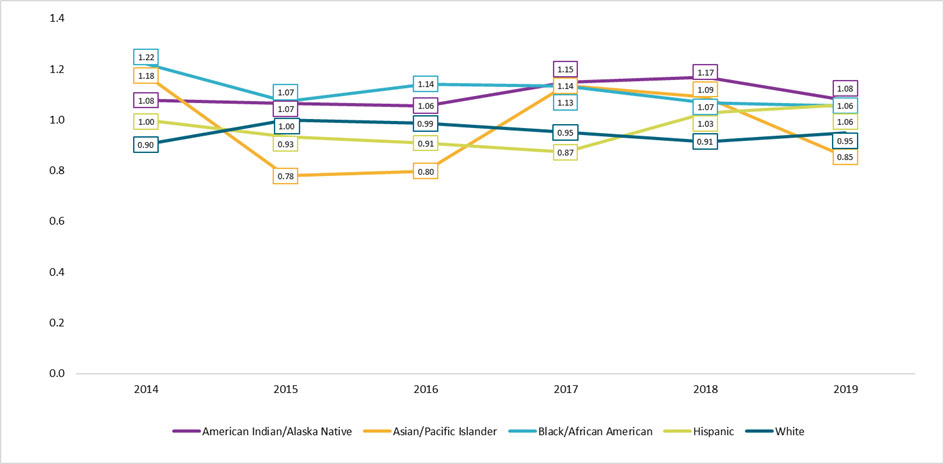Disparity in Child Welfare
Where disproportionality identifies the over or under representation of a group compared to that group in the underlying population, disparity identifies inequity after a child or youth has entered the system by comparing the proportion of a group at a decision point to the proportion of that group at a prior decision point. DCYF tracks disparity in Child Welfare using Disparity Ratios; a disparity ratio of 1.0 would represent no change between decision points, whereas ratios greater than 1.0 indicate that the group proportion has increased since the prior decision point. An increase means that other racial/ethnic groups have exited the system to a greater extent by this point and is a sign of disparity.


